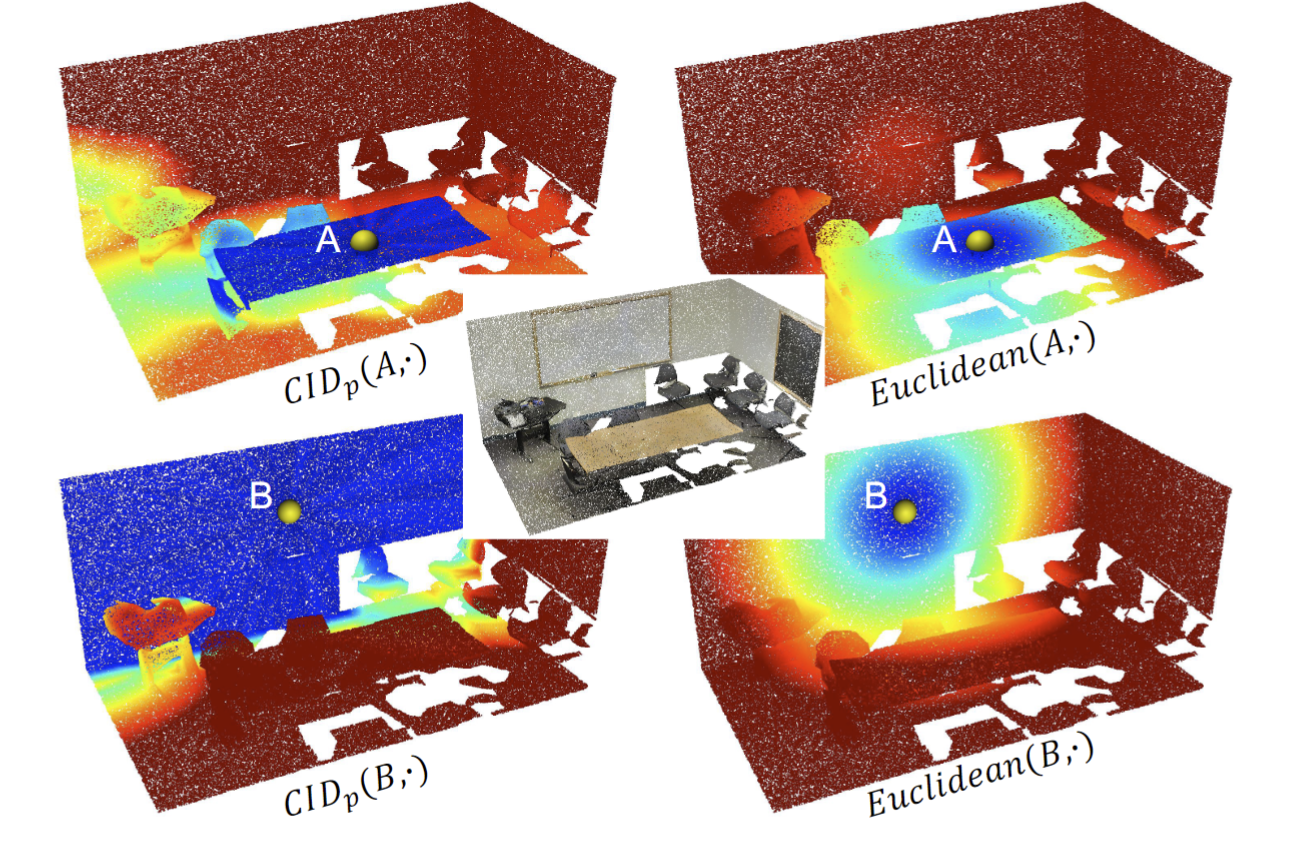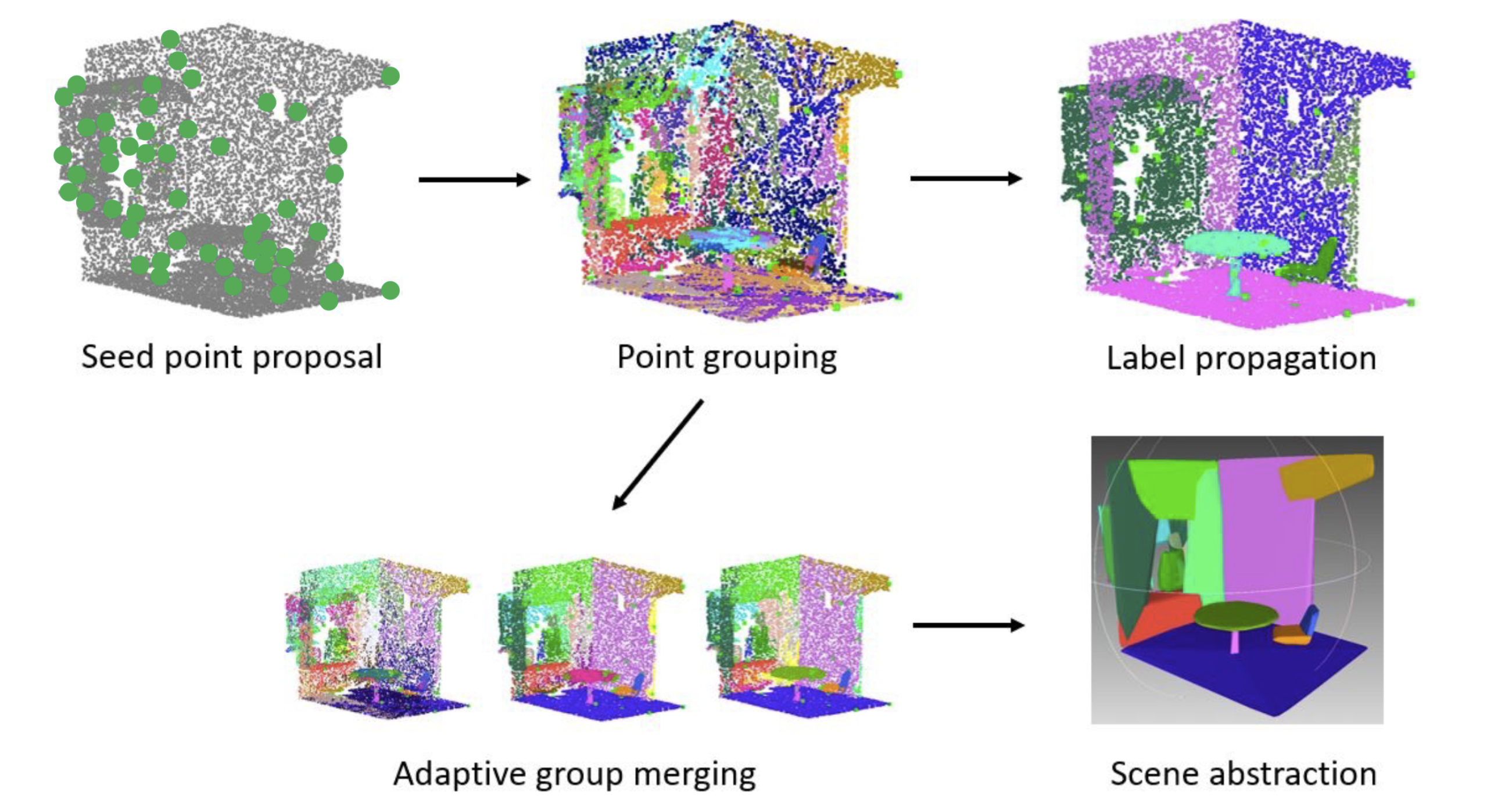
We propose Concavity-induced Distance (CID) as a novel way to measure the dissimilarity between a pair of points in an unoriented point cloud. CID indicates the likelihood of two points or two sets of points belonging to different convex parts of an underlying shape represented as a point cloud. After analyzing its properties, we demonstrate how CID can benefit point cloud analysis without the need for meshing or normal estimation, which is beneficial for robotics applications when dealing with raw point cloud observations.
By randomly selecting very few points for manual labeling, a CID-based point cloud instance segmentation via label propagation achieves comparable average precision as recent supervised deep learning approaches, on S3DIS and ScanNet datasets. Moreover, CID can be used to group points into approximately convex parts whose convex hulls can be used as compact scene representa- tions in robotics, and it outperforms the baseline method in terms of grouping quality.
The word concavity in CID originates from “concave polygon” which means non-convex shapes, following the convention in previous convexity-based shape analysis works. We gives our defination of CID between two points(CIDp) and two sets of points(CIDg). The detailed description can be found in our CID paper.


In the instance segmentation, a small portion of points called seed points need to be proposed and labeled. Then the instance segmentation is performed by propagating the labels to the unlabeled points based on the nearest CID neighbor. In the abstraction task, no label is needed. A point cloud is decomposed into some approximate convex parts based on the CID, and then the convex hull for each part is calculated to abstract the point cloud into a set of convex hulls.


The above images show the merging process of CID-based method in point cloud segmentation & decomposition.

@ARTICLE{Wang2023CID,
author={Wang, Ruoyu and Xue, Yanfei and Surianarayanan, Bharath and Tian, Dong and Feng, Chen},
journal={IEEE Robotics and Automation Letters},
title={Concavity-Induced Distance for Unoriented Point Cloud Decomposition},
year={2023},
volume={8},
number={8},
pages={4807-4814},
doi={10.1109/LRA.2023.3288375}
}